Written by Lorrie Reynolds
Categories
One of the common agility sayings that has been around for years is “Trial like you train.” While it makes a lot of sense to use the same handling techniques and an upbeat attitude, do you actually trial like you train? Should you?
Start Line Rituals in Dog Agility
Many instructors talk about start line rituals – routines you create with your dog that begin with taking him out of the crate and end with starting your run together. For many teams, they are an important part of success, allowing the team to focus and connect before a run.
Even if you don’t have a “formal” routine, there are probably certain things you do every time you get ready to run at a trial. However, I doubt that these routines are followed before every training exercise or session.
This is one area where maintaining a routine at a trial is more important than it is in training, BUT, it shouldn’t be something that is ONLY done at trials, because that can create additional stress on the dog. In this case, it is more important to “train like you trial” and be sure to periodically add your start line ritual to your training sessions.
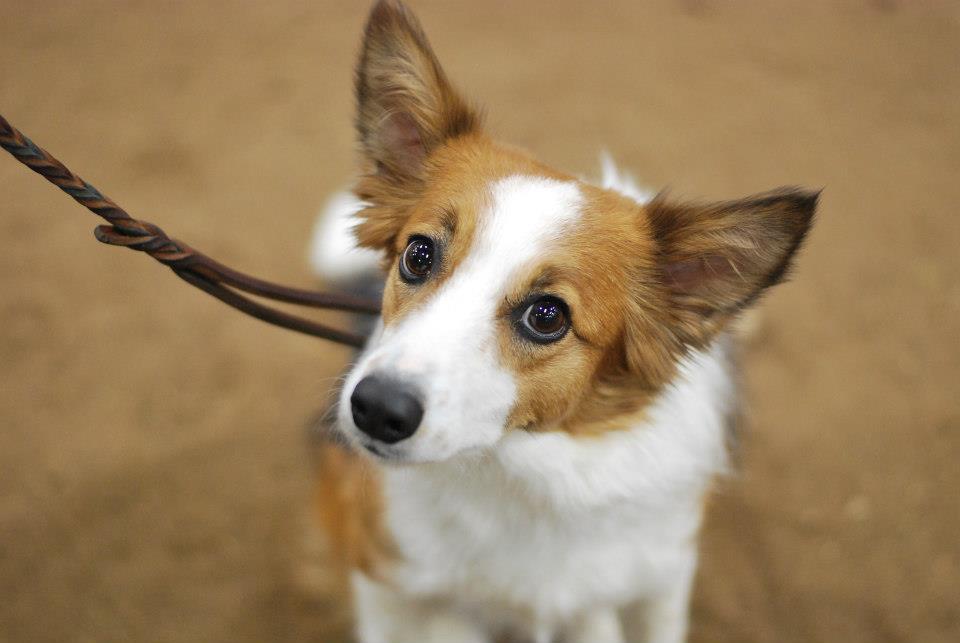
Reward Rituals During Agility Trials
This is another item that is more “train like you trial” rather than bringing a training ritual into trialing. If you always carry treats or a toy during training, it can be very confusing to your dog when the treats or toys are absent at a trial.
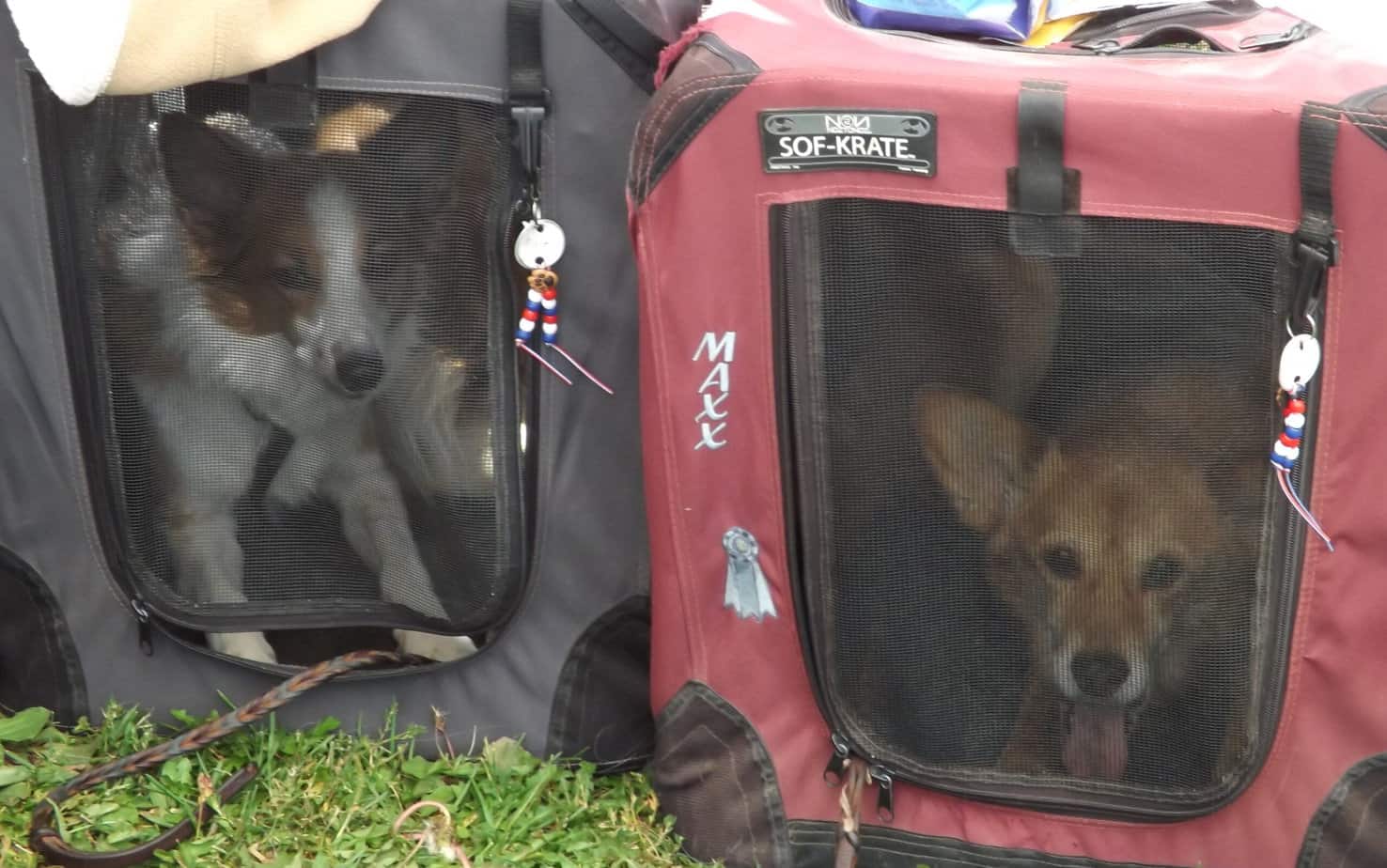
While it is convenient to carry your reward with you while training, be sure that you consciously create a reward ritual during some of your training sessions that resembles what will happen at a trial. Finish the exercise and go back toward the crate to reward, or leave the toy outside the training area and reward after the run.
As a side note on this topic, fun matches and venues that allow you to run For Exhibition Only (FEO) and take a toy into the ring may be useful for transitioning between training and trials.
Maintaining Criteria for Agility Equipment
One essential item to keep the same between training and trials is your performance criteria. So many new handlers make this mistake. They walk into the agility ring, start the run, and the dog doesn’t quite hit that contact the way he’s been trained due to performance stress or the distractions in a new environment.
The dog DID hit the yellow though, so no faults were called, and the handler wants so badly to qualify that they keep going to the next obstacle, without even acknowledging that it wasn’t the best performance. Don’t fall into this trap.
As the team continues to trial, the dog leaves the contact higher and higher on the board, losing the contact criteria completely. Then it happens – the dog leaves the contact without touching the yellow, and the handler realizes (one hopes) that the dog has completely lost the understanding of contact criteria at trials. He is inconsistent at trials and not qualifying any more.
In training, the contact performance is still perfect, because the criteria has been maintained and the distractions are minimal. This becomes a frustrating and difficult problem to solve. People will say the dog is “ring-wise” and “knows” that he can “get away with it” at trials, but the true problem is that the standards are different between training and trials.
This is one area that it is absolutely critical to trial like you train.
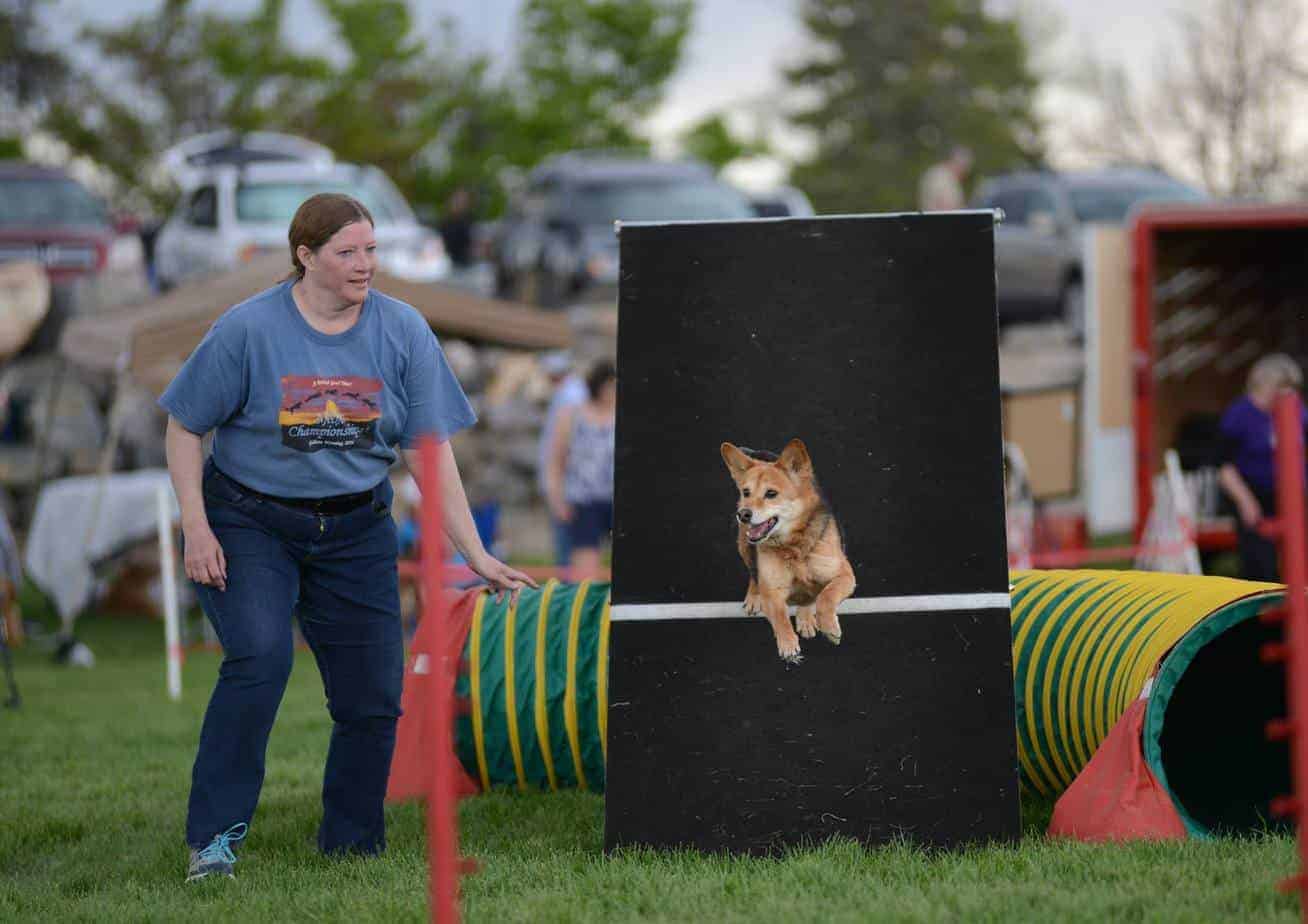
Helicopter Handling
It’s normal to handle a little more conservatively at a trial than you do during training. After all, you want to do well in front of all of those people, and it feels like all eyes are on you. (See this article if you want to learn to dance like nobody’s watching).
However, there’s a big difference between being a bit more conservative and turning into a helicopter handler. Your dog may need a little more support to help him in a distracting environment, but he definitely doesn’t need to be babysat at every obstacle and have his handler question every move.
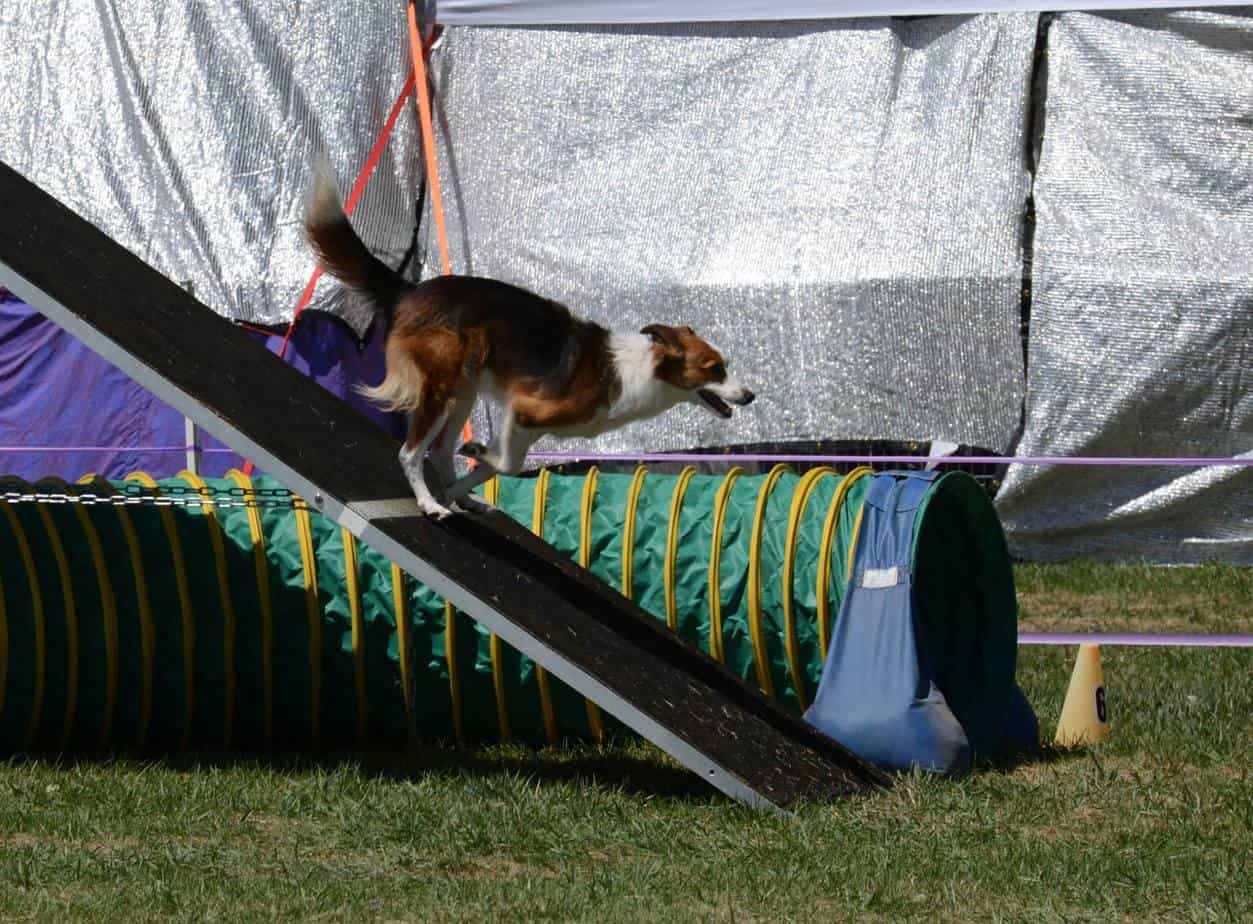
If your dog performs independently during training and can go out 15 feet to an obstacle, he should easily be able to handle that same sequence at 12 – 14 feet at a trial. Helicopter handling is one of the worst things you can do to your dog at a trial.
Babysitting contacts puts additional pressure on the dog and may cause him to come off. Hesitating to make sure your dog jumps the bar can make him drop it instead. Acting out of character can make your dog stress even more than he normally would in a new environment. You’ve trained him well. Don’t hover, just trust him to do his job, even if he needs a tiny bit of extra support.
Today’s Tip
“Train like you trial” is merely a reminder that you should make your dog’s trialing experience as similar as possible to his everyday training experience, and vice versa. The environmental distractions at a trial, and your nervousness, make it difficult enough for the dog to maintain his performance. Make sure that trialing feels just like settling into a normal, happy, and familiar routine.
You Might Also Like…
Five Ways to Crush It at Your Next Dog Agility Seminar
Going to a dog agility training seminar? Check out these five tips to maximize your return on investment!
Read This Before Deciding on Your Agility Dog’s Contact Performance
Which contact performance, running or stopped, is right for your team? The answer might surprise you.
Is Your Agility Dog a Pinto or a Ferrari?
If you’ve moved up from a slow or moderately-fast agility dog to a speed racer, here’s some advice to make your life easier.
Get tips, stories, discounts, and early notification of events and new courses delivered straight to your inbox! Join the community!
Top photo, first photo, third photo, and last photo: Courtesy of Dog Agility Photos for Fun
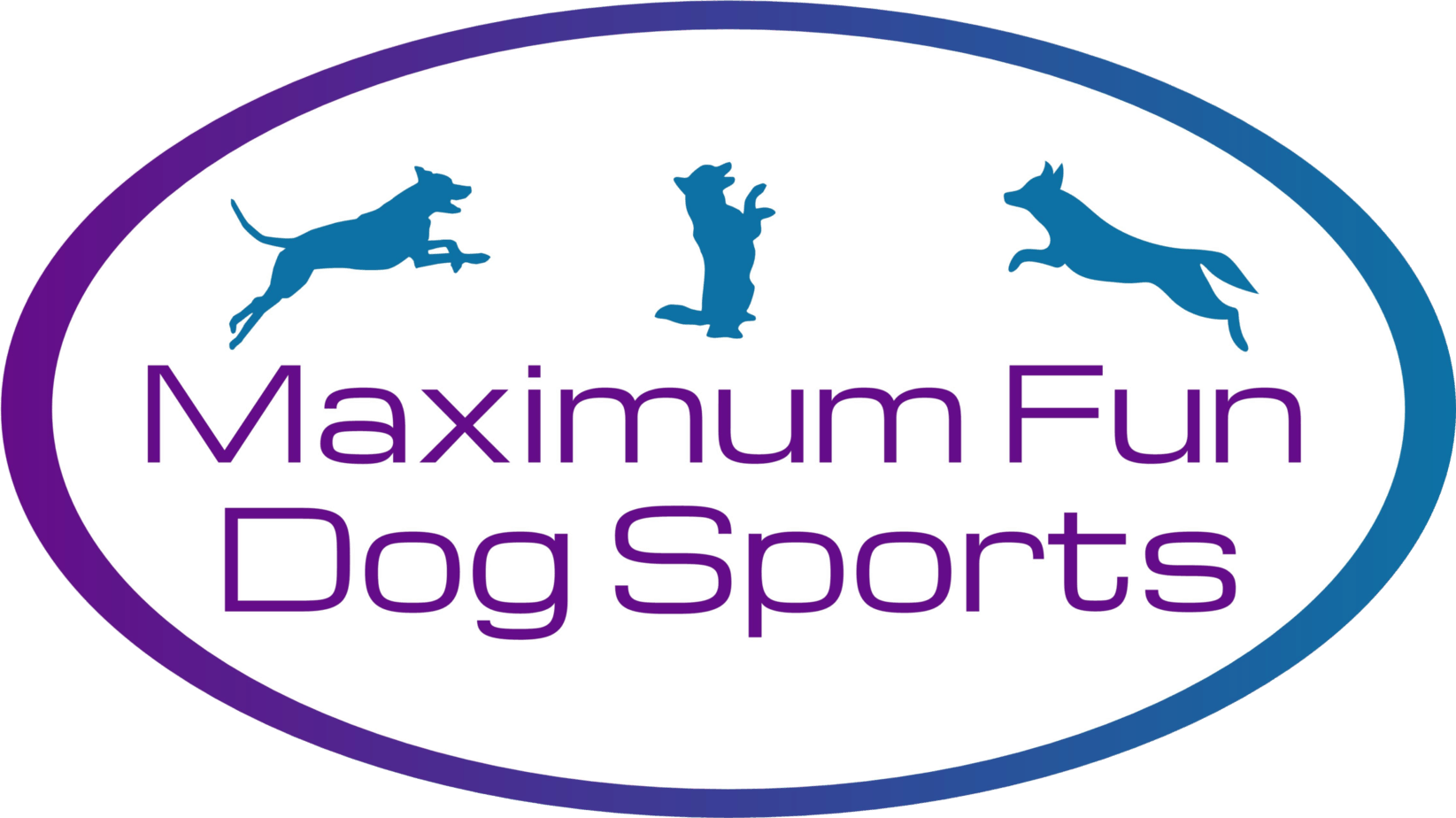
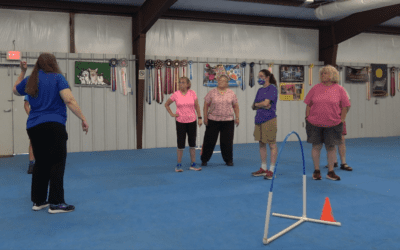
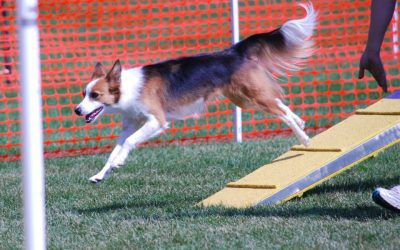
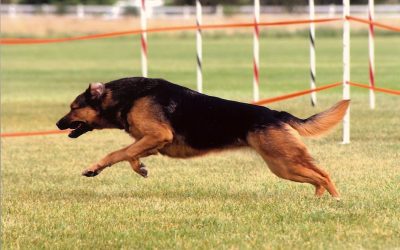
0 Comments